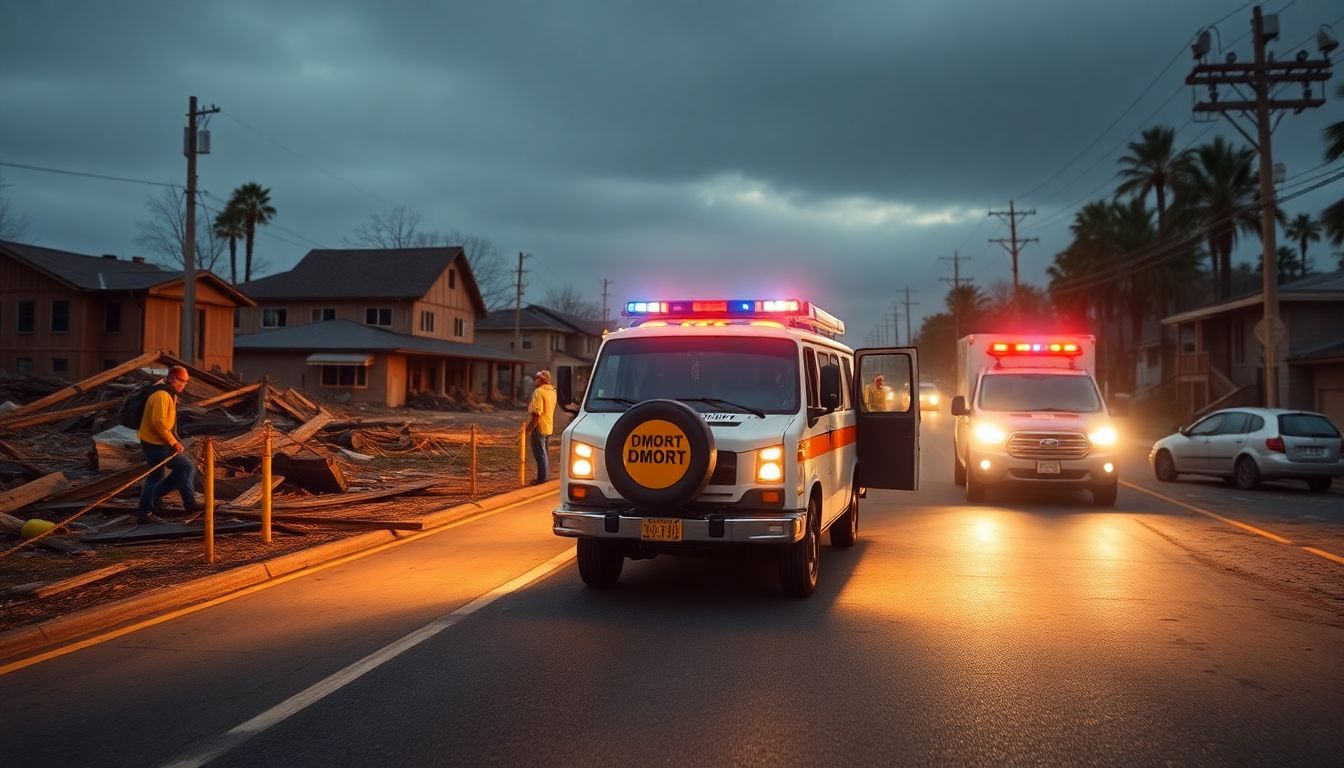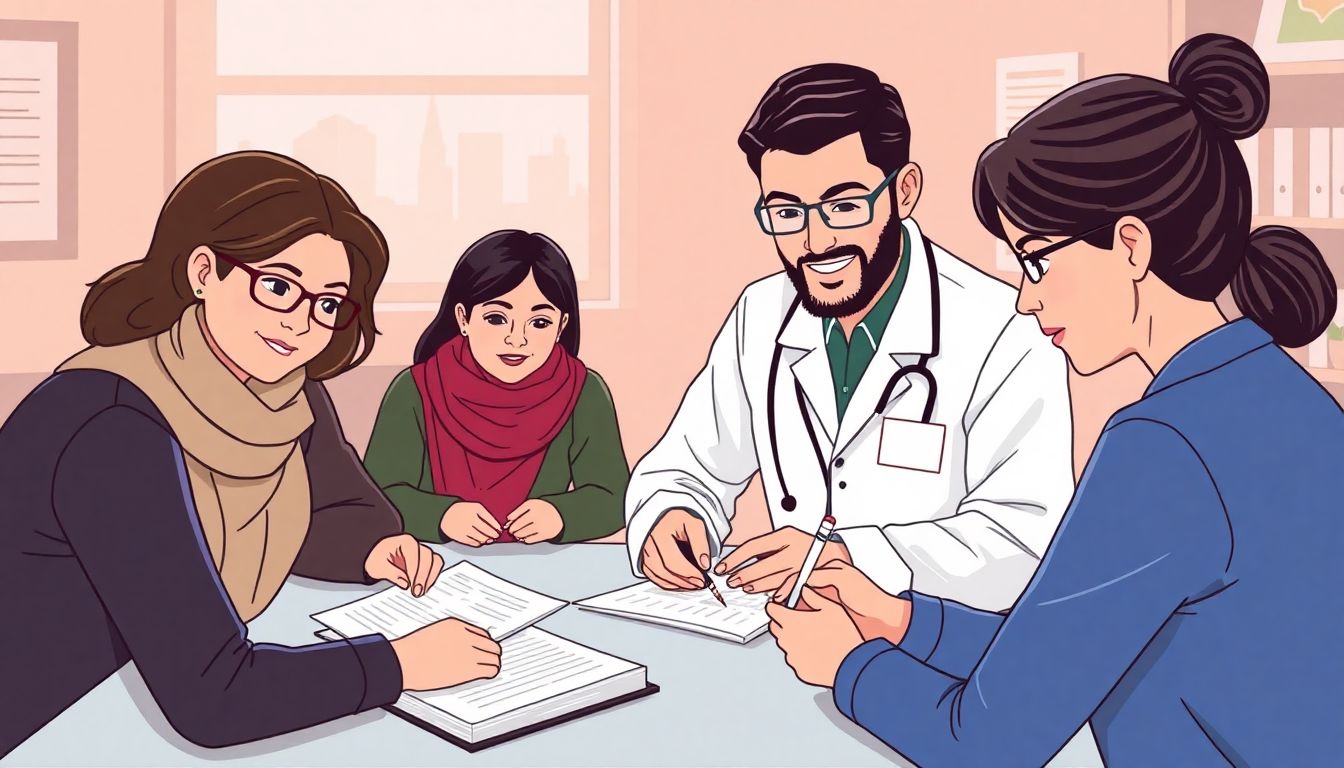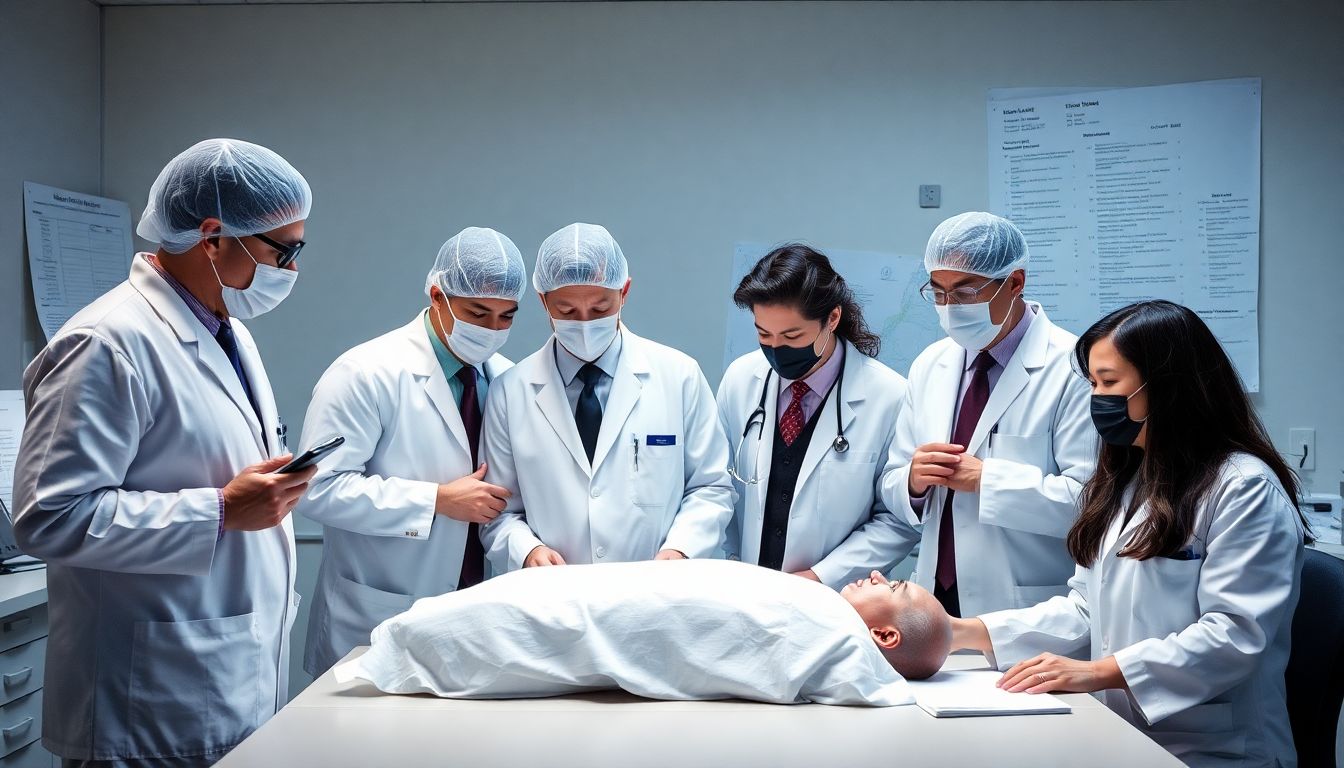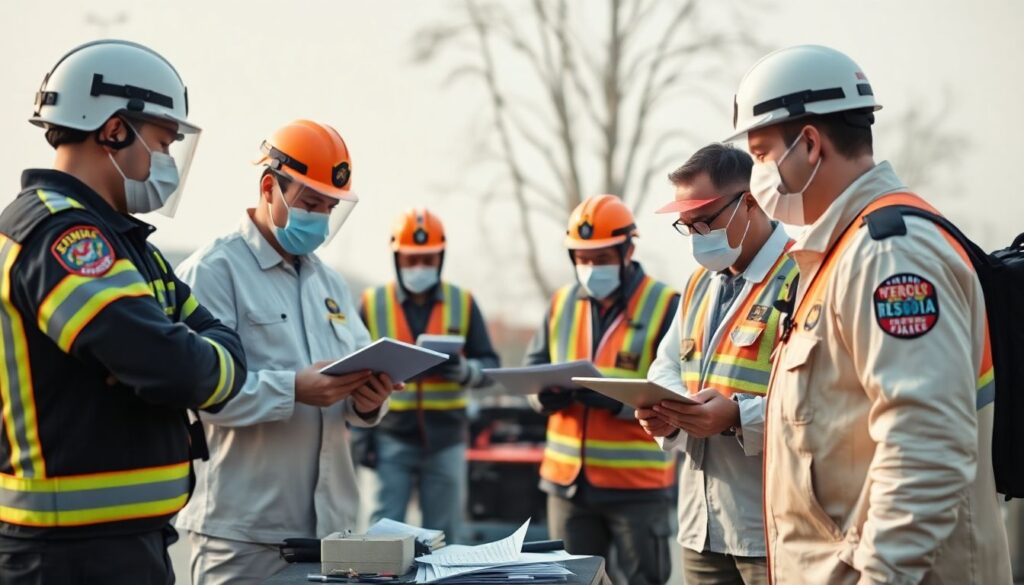In the wake of tragic events like the recent attack in New Orleans, the process of identifying victims is a critical yet often overlooked aspect of disaster response. WBRZ had the opportunity to speak with Chuck Smith, the commander of the Disaster Mortuary Operational Response Team (DMORT) for Region Six, which includes Louisiana, Oklahoma, New Mexico, Arkansas, and Texas. Smith provided a rare glimpse into the intricate and emotionally challenging work of identifying bodies after a mass casualty incident.
From terrorist attacks to natural disasters, learn how DMORT teams work to identify victims and bring closure to families.
In the heart of chaos, a symphony of coordination unfolds as the disaster response team moves with the precision of a finely tuned machine. Clad in distinctive vests and armed with years of training, they sweep across the affected area, each member playing a crucial role. The forensic analysts, eyes sharp and minds even sharper, scrutinize every inch of debris, their tools meticulously collecting samples and documenting evidence. Their dedication is palpable, every movement echoing their commitment to unraveling the truth amidst the wreckage. They are the silent narrators of the disaster’s story, ensuring that every piece of information is preserved for the investigations to come.
Meanwhile, another arm of the team is devoted to something equally important – the hearts and minds of the affected. The family support unit, their faces a beacon of empathy and strength, work tirelessly to provide comfort and assistance. They listen, they console, they inform, their voices a steady anchor amidst the storm of emotions. Their professionalism shines through in every interaction, creating a safe haven for those who have lost so much. They are the bridge between despair and hope, their actions a testament to the team’s holistic approach to disaster response.
As the sun dips low, casting long shadows across the scene, the team’s dedication does not waver. They continue their work, their silhouettes a symbol of resilience and commitment. The hum of their activity is a steady rhythm, a promise to the victims, to the families, to the world – that they will not stop until every stone has been turned, every need has been met, and every question has been answered. This is their pledge, their calling, their duty.

The Role of DMORT in Mass Casualty Incidents
In the face of large-scale tragedies, the Disaster Mortuary Operational Response Teams (DMORT) play a crucial role in managing mass casualty incidents. These dedicated teams, operating under the United States Department of Health and Human Services, are designed to provide swift and organized responses to events that overwhelm local resources. Their primary goal is to ensure the proper recovery, identification, and processing of deceased individuals, bringing closure to families and communities affected by these devastating occurrences.
DMORT teams are strategically deployed to complement and augment local medical examiner and coroner offices when the sheer magnitude of an incident exceeds their capacities. The deployment process begins with a request for assistance from a local or state authority, which is then channeled through the federal government. Once activated, DMORT members, who are volunteers with expertise in various fields such as pathology, forensics, and funeral services, swiftly converge on the affected area to establish a temporary morgue and begin their meticulous work.
The types of incidents that DMORT teams respond to are diverse and encompass both natural and man-made disasters. These include:
-
Natural Disasters:
Such as hurricanes, earthquakes, and floods, where the force of nature results in significant loss of life.
-
Transportation Accidents:
Involving planes, trains, or other modes of transport, which can lead to a high number of fatalities.
-
Acts of Terrorism or Mass Violence:
Where the criminal actions of individuals or groups cause mass casualties.
-
Pandemics and Epidemics:
Where the spread of disease results in a high number of deaths in a short period.
DMORT teams are not only equipped to handle the immediate aftermath of a mass casualty incident but also play a vital role in long-term recovery efforts. Their work includes the careful identification and documentation of remains, collection of personal effects, and provision of support to families. By providing these essential services, DMORT teams help to restore dignity to the deceased and bring a sense of closure to the loved ones left behind, making them an indispensable part of the nation’s emergency response infrastructure.

The Identification Process: Forensic Testing and Family Support
In the aftermath of mass fatality events, DMORT (Disaster Mortuary Operational Response Teams) teams are tasked with the solemn duty of identifying victims, providing closure to families, and ensuring the deceased are treated with respect and dignity. The identification process involves meticulous forensic testing methods that piecce together the lives of those lost. One of the most reliable methods is DNA testing, which can positively identify victims even in cases where other methods fall short.
DNA testing involves extracting and analyzing genetic material from the victim’s remains. This process can take time, as DMORT teams must carefully collect and preserve samples before sending them to a laboratory for analysis. Meanwhile, families of the missing provide DNA reference samples, typically through buccal swabs or personal items like toothbrushes. This allows forensic specialists to compare the victim’s DNA profile with family reference samples, establishing a match that can reunite remains with their loved ones.
In addition to DNA testing, other forensic methods play a crucial role in victim identification:
-
Fingerprint analysis:
When possible, DMORT teams lift fingerprints from the victim and compare them to known records, such as those from employment, military service, or previous arrests.
-
Dental records:
Odontologists examine the victim’s teeth, noting unique features, restorations, and previous dental work. Families provide dental records and contact information for the victim’s dentist, enabling comparisons that can lead to positive identifications.
-
Anthropological analysis:
Forensic anthropologists study the victim’s bones and remains, gathering insights into their age, sex, ancestry, and unique physical features. This information can help narrow down the victim’s identity and corroborate other findings.
-
Personal effects:
Items found with the victim, such as jewelry, clothing, or documents, can provide valuable clues about their identity. Families assist by providing descriptions and photographs of their loved one’s belongings.
Throughout this challenging process, victim identification teams work closely with families to gather necessary information and provide support. Family Assistance Centers are established to serve as a hub for communication, counseling, and coordination between families and DMORT teams. Here, families can offer invaluable insights that aid in identification efforts, such as descriptions of tattoos, scars, or medical histories. Simultaneously, DMORT teams keep families apprised of developments and offer guidance during this emotionally taxing time. By combining cutting-edge forensic science with compassionate care, DMORT teams strive to heal the wounds of tragedy one identification at a time.

Specialties Within the Response Team
In the wake of a mass fatality incident, the DMORT (Disaster Mortuary Operational Response Team) is activated, bringing together a diverse range of specialists to manage and process large numbers of fatalities efficiently and respectfully. Each member of the DMORT response team brings unique skills and expertise to the operation, working seamlessly to ensure the deceased are positively identified and families can find closure.
At the core of the DMORT response team are the death investigators. These professionals are responsible for collecting and documenting vital information about the deceased. They work meticulously to gather details such as personal belongings, physical descriptions, and any identifying marks or tattoos. Death investigators play a crucial role in piecing together the puzzle of identification, ensuring that no detail is overlooked.
Supporting the death investigators are the funeral directors, who bring a sense of dignity and respect to the process. Their role involves:
- Preparing the remains for examination and transportation
- Ensuring proper handling and storage of the deceased
- Providing support and information to grieving families
Their expertise in the funeral industry is invaluable in ensuring that the deceased are treated with the utmost care and respect throughout the process.
The DMORT response team also includes specialized forensic experts who contribute their unique skills to the identification process. Forensic dentists utilize dental records to match the deceased with their identity, while forensic pathologists conduct autopsies to determine the cause of death and gather additional identifying information. Additionally, x-ray technicians play a vital role by:
- Capturing detailed images of the remains
- Assisting in the identification process through medical imaging
- Providing crucial support to the forensic experts
The collaborative efforts of these specialists ensure that the identification process is thorough, accurate, and efficient, providing much-needed answers to families during a difficult time.

Emotional Challenges and Personal Experiences
Being a member of the Disaster Mortuary Operational Response Team (DMORT) is not for the faint-hearted. These dedicated professionals are often the last to respond to a disaster and the last to leave, facing unimaginable horrors and emotional challenges along the way. Chuck Smith, a veteran DMORT member, has witnessed more than his share of tragedy, from the Oklahoma City bombing to the 9/11 terrorist attacks and Hurricane Katrina.
In the wake of the Oklahoma City bombing, Smith and his team were tasked with recovering and identifying the remains of victims, many of whom were children. The emotional toll was immense. “You’re seeing the worst of humanity,” Smith recalled, “But you’re also seeing the best. People coming together, supporting each other.” The team had to compartmentalize their emotions, focusing on the meticulous process of identification and return of remains to families. Yet, the grief was palpable, seeping into every aspect of their work.
The 9/11 terrorist attacks presented an even more daunting challenge. The sheer scale of the devastation was unlike anything the team had encountered before. Smith remembers the surreal quiet at Ground Zero, interrupted only by the distant hum of machinery and the occasional shout of a worker. The emotional challenges were compounded by the physical demands of the work. Team members often worked 12-hour shifts, sifting through debris in search of remains. The air was thick with dust and the stench of death, a constant reminder of the enormity of the task at hand.
-
Feelings of helplessness:
Despite their best efforts, DMORT members often feel helpless in the face of such overwhelming destruction.
-
Survivor’s guilt:
Many team members struggle with survivor’s guilt, questioning why they were spared when so many others perished.
-
Post-traumatic stress:
The repeated exposure to traumatic events can lead to post-traumatic stress, manifesting in various ways, from sleepless nights and irritability to full-blown anxiety and depression.
During Hurricane Katrina, Smith and his team faced a different set of challenges. The sheer geographical scale of the disaster was overwhelming. Teams had to navigate flooded streets and damaged infrastructure to recover remains. The emotional toll was exacerbated by the knowledge that many of the victims were among society’s most vulnerable – the elderly, the infirm, and the impoverished. Yet, through it all, Smith and his team remained steadfast in their commitment to treating the victims with dignity and respect.
FAQ
What is DMORT and when is it deployed?
What types of incidents does DMORT respond to?
- Terrorist attacks
- Plane crashes
- Natural disasters
The team is prepared to handle any situation where the number of fatalities is beyond the capacity of local authorities.
How does the victim identification team work with families?
- Dental records
- Fingerprints
- DNA swabs
This information is then used for comparison and identification.
What specialties are represented within a DMORT response team?
- Death investigators
- Funeral directors
- Forensic dentists
- Forensic pathologists
- X-ray technicians
Each specialist plays a crucial role in the identification process.
How do DMORT team members cope with the emotional challenges of their work?
- Peer support
- Professional counseling
- Taking moments for personal reflection
The emotional impact can be profound, as team members work to identify victims and bring closure to families.









